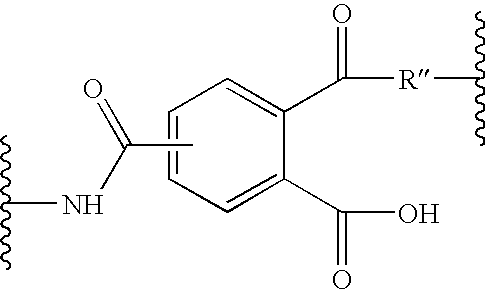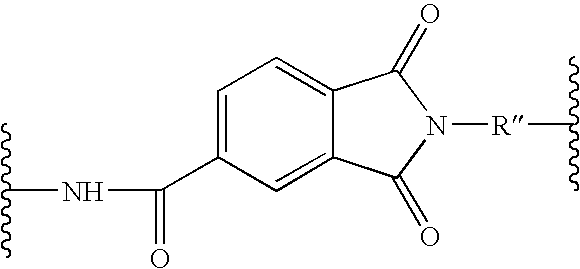Concentrated fluoropolymer dispersions stabilized with anionic polyelectrolyte dispersing agents
- Summary
- Abstract
- Description
- Claims
- Application Information
AI Technical Summary
Benefits of technology
Problems solved by technology
Method used
Image
Examples
example 1
[0072]Several samples of 200 grams of as-polymerized (raw) PTFE dispersion at 41 wt % solids are placed in 8-ounce glass jars. The jars are approximately ¾ full.[0073]Sample 1 contains only as-polymerized PTFE dispersion.[0074]Sample 2 contains as-polymerized PTFE dispersion stabilized with 1.22 wt % TAMOL® 681 (active ingredient basis) based on the dry weight of PTFE.[0075]Sample 3 contains as-polymerized PTFE dispersion with 6 wt % of wet US Filter A-244-OH ion exchange resin[0076]Sample 4 contains as-polymerized PTFE dispersion stabilized with 1.22 wt % TAMOL® 681 based on the dry weight of PTFE and 6 wt % of wet US Filter A-244-OH ion exchange resin.
[0077]The jars are placed on a Brunnell Wrist Action Shaker and shaken on a speed setting of 1 at room temperature, a suitable setting to get good mixing of the ion exchange resin and PTFE dispersion in Samples 3 and 4.[0078]Sample 1 containing only PTFE dispersion is ⅔ coagulated after shaking for about 1.5 hours.[0079]Sample 2 cont...
example 2
Shear Stability as Measured by Gel Time
[0082]To establish an effective level of TAMOL® 681, samples of as-polymerized PTFE dispersion and TAMOL® 681 are sheared in a Waring blender at high speed until the dispersion gelled. The resulting Gel Times are shown below in Table 1. The shear stability is found to be highly dependent on concentration of TAMOL®. The wt % Tamol 681 is expressed on the basis of active ingredients relative to PTFE solids.
TABLE 1wt % TAMOL ® 681Gel Time, seconds0.3520.7041.0531.49431.75727
example 3
Fluorosurfactant Removal
[0083]A dispersion containing 1.75 wt % TAMOL® 681 (active ingredients basis) in as-polymerized PTFE with 41 wt % solids is prepared. Additional ammonium hydroxide is added to insure the pH remains above 9.5. Varying level of A-244-OH ion exchange resin are added and the samples are shaken on the Brunnell Wrist Action Shaker at a speed setting of 1 for 3 hours. The samples are then analyzed for APFO levels based on the total dispersion weight. The results are shown below.
TABLE 2wt % A-244-OH ResinAPFO, ppm1.28793.54345.82328.114910.599.812.864
[0084]The results indicate that the TAMOL® 681 provides sufficient stability to allow ion exchange to reduce the level of APFO in fluoropolymer dispersions. It is also a good indication that the ion exchange resin is not removing the TAMOL® as well as the APFO.
[0085]The rate of ion exchange can be further improved by using additional ion exchange resin or by increasing the temperature at which the ion exchange is conduct...
PUM
| Property | Measurement | Unit |
|---|---|---|
| Fraction | aaaaa | aaaaa |
| Fraction | aaaaa | aaaaa |
| Fraction | aaaaa | aaaaa |
Abstract
Description
Claims
Application Information
 Login to View More
Login to View More - R&D
- Intellectual Property
- Life Sciences
- Materials
- Tech Scout
- Unparalleled Data Quality
- Higher Quality Content
- 60% Fewer Hallucinations
Browse by: Latest US Patents, China's latest patents, Technical Efficacy Thesaurus, Application Domain, Technology Topic, Popular Technical Reports.
© 2025 PatSnap. All rights reserved.Legal|Privacy policy|Modern Slavery Act Transparency Statement|Sitemap|About US| Contact US: help@patsnap.com



